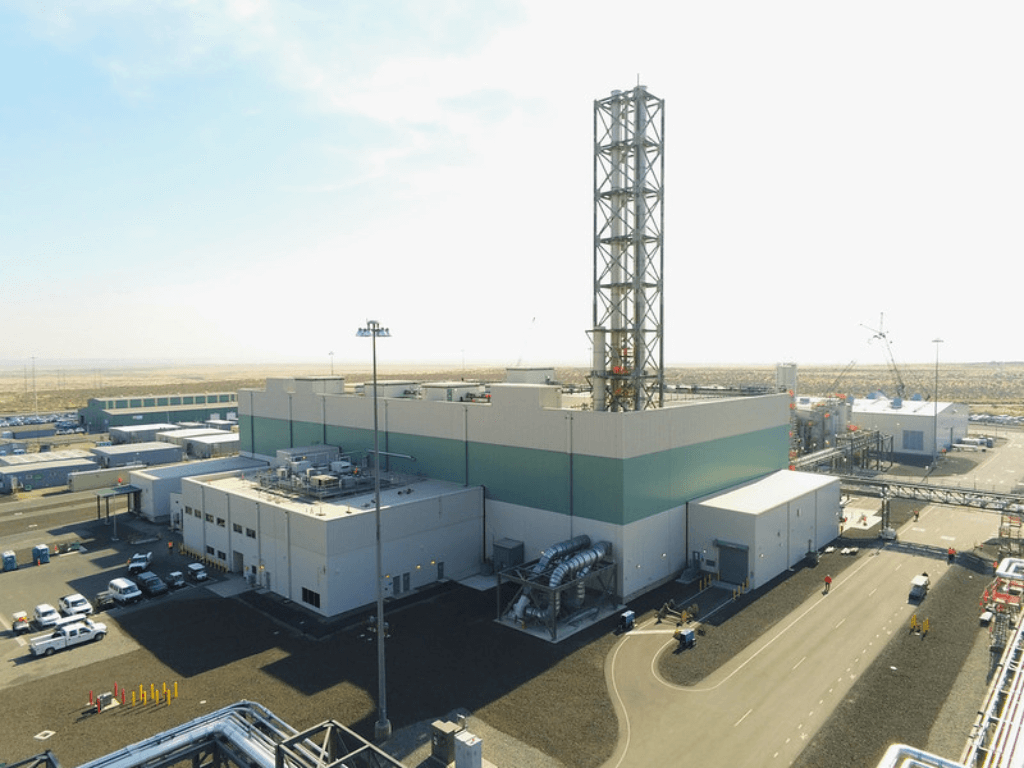
The Waste Treatment and Immobilization Plant at the Hanford site will begin processing non-radioactive simulant waste in ‘a few weeks,’ a site spokesperson said Monday.
The non-radioactive simulant, which is still chemically hazardous, is a stand-in for the liquid radioactive waste the facility was built to solidify, according to the site. Processing the non-radioactive liquid is a sort of stress test for the plant and its operators, a phase DOE calls cold commissioning.
Administratively, cold commissioning started last week, when DOE and Bechtel National, the treatment plant contractor, submitted safety assessments to the Washington Department of Ecology. The state agency signed off on the necessary Tri-Party Agreement paperwork Nov. 21, the DOE spokesperson told the Monitor Tuesday.
In a July 30 order, U.S. District Judge Rosanna Malouf Peterson in the Eastern District of Washington approved delaying the deadline for Interim Milestone A-8, the start of Low-Activity Waste Facility Cold Commissioning, to Nov. 29 from Aug. 1. DOE, in a July court filing requesting the extra time, said cold commissioning is defined as “the introduction of feed simulants for the purpose of determining individual facility functionality.”
The oft-modified Tri-Party Agreement between DOE, Ecology and the U.S. Environmental Protection Agency sets deadlines and rules for cleaning up Hanford’s radioactive waste. That includes the cache the Waste Treatment Plant was built to deal with: 56 million gallons of waste leftover from plutonium production during World War II and the Cold War and stored in 177 underground tanks.
Earlier this year, DOE thought cold commissioning for the Waste Treatment and Immobilization Plant’s (WTP) direct-feed, low-activity waste campaign would begin Aug. 1. When that slipped to Nov. 29, some Hanford stakeholders were not surprised.
Cold commissioning will last for months and, if everything goes to plan, should put WTP on track to turn real radioactive waste into a more stable glass form by Aug. 1, 2025. The deadline for that milestone, known as hot commissioning, is also set in the Hanford cleanup consent decree.
A copy of the notice that DOE forwarded Ecology and other stakeholders was shared Monday with Exchange Monitor.
“We’re thrilled at the news that cold commissioning has been achieved at Hanford’s Waste Treatment Plant,” Washington Ecology’s Nuclear Waste Program Manager Stephanie Schleif said via emailed statement to Exchange Monitor. “The facility is now one step closer to vitrifying tank waste.”
The direct feed low-activity waste campaign set to begin in 2025 will handle the Hanford’s more voluminous, but less radioactive, liquid tank water. Facilities to handle Hanford’s more radioactive high-level waste were scheduled to start operation in 2030s.
Bechtel National started work under a DOE contract in December 2000 to build the waste vitrification plant at Hanford. Stretched out by technical challenges that at one point prompted the Secretary of Energy to put the work on hold, the pact is currently valued at $15.5-billion.